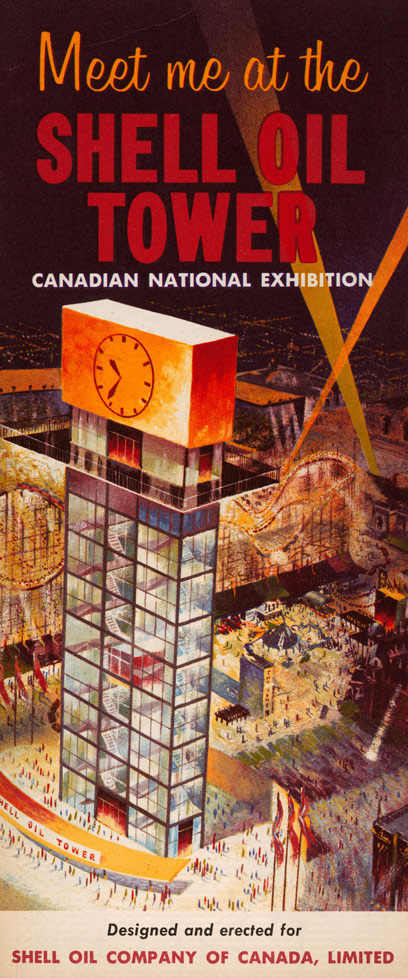past pieces of toronto: the shell oil/bulova tower

From November 2011 through July 2012 I wrote the "Past Pieces of Toronto" column for OpenFile, which explored elements of the city which no longer exist. The following was originally posted on March 4, 2012. “Meet me at the Shell Tower” pamphlet, circa 1955, City of Toronto Archives, Fonds 261, Series 756, File 50, Item 1. Oil can giveth, and oil can taketh away. That might be the easiest way to sum up the story of the 36-metre-high clock tower that provided Canadian National Exhibition visitors with a great view of the city and a foolproof meeting spot for 30 years. Born from sponsorship by an oil giant, the landmark died to make way for a car race . Designed by architect George Robb , the modernist Shell Oil Tower was the first building in Toronto to utilize welded-steel construction. It quickly proved a popular attraction following its debut in 1955, thanks to promotional pitches like this one: There’s a new landmark at the “Ex.” It’s the Shell Oil To...




